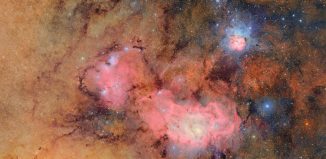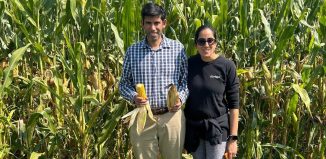Dodo may not have been so dumb

When Eugenia Gold and her husband Josh got their dogs, she wanted to name them. She chose Rex and Maia, which reflects her work. The couple has a history that dates back over 17 years and includes attending the high school senior prom together.
History is at the center of what Gold studies, as she explores the transition from dinosaurs to birds.

Gold, who joined the Department of Anatomical Sciences at Stony Brook University as an instructor in August, recently completed her Ph.D. at the American Museum of Natural History in New York. At the Upper West Side museum, she focused on how the neurobiology of theropod dinosaurs — a group that includes Tyrannosaurus rex — changed as flight evolved. While scientists aren’t suggesting that a version of T. rex developed flight, they do consider birds as living dinosaurs in the same way humans are mammals.
In her research, Gold studied the extinct dodo bird. Using a CT scan of the bird’s skull, she explored the relative size and shape of the brain.
Gold found that the flightless dodo bird was likely not as mentally deficient as legend has it. “We discovered that the dodo has a brain size in proportion to its body size, so it was likely not as stupid as we thought, but rather as intelligent as common pigeons.” She compared it to eight other pigeon species, seven of which are close relatives of the dodo and one of which is the common pigeon, which is a more distant relative.
“It falls right on the line in terms of brain-to-body size,” Gold said. “If we take that as a rough proxy, it’s probably about as smart as a pigeon.”
Dodo birds developed their reputation for lacking intelligence because they weren’t afraid of sailors and because they went extinct so quickly. They didn’t run away or hide when humans came, largely because they didn’t have any experience with them. “They were easily herded onto ships,” said Gold. “That led to a reputation of being stupid.”
In studying the dodo’s brain, Gold also found that these birds had an enlarged olfactory bulb, which they share with its closest relative, the solitaire bird. They used these olfactory bulbs to smell out ripe fruit and find prey buried in the dirt or sand or hiding under leaves.
Gold based her study of the dodo on an individual skull that was in the Natural History Museum in London. The recent development of CT scanning enabled her to conduct this research.
Members of Gold’s department appreciate the skills and expertise she brings to Stony Brook. “We value both her commitment to our teaching mission as well as her research program,” said Alan Turner, an associate professor in the Department of Anatomical Sciences. “Her research background and application of advanced brain imaging like CT and PET are complementary to those of us in the department that use similar techniques for other types of studies of morphology.”
Gold’s work with the dodo bird will be a part of a new exhibit at the American Museum of Natural History called Dinosaurs Among Us. The exhibit will open to the public on March 21 and will feature the work of several graduate students from the lab of Mark Norell, the Macaulay Curator in the Division of Paleontology at the museum and the division’s chair. The exhibition, which will be in the LeFrak Family Gallery on the fourth floor of the museum, will feature a 23-foot feathered tyrannosaur and a four-winged dromaeosaur with a 22-inch wingspan and patterned plumage. It will also include a fossil cast of a relative of Triceratops that had simple feathers on its body.
Norell said Gold’s work involved a “really long, intensive analysis.” Gold conducted something called “geometric morphometrics” in which she mathematically described brains and parts of brains.
Norell said Gold’s work is one element of the coming exhibition at the museum. “This exhibition is about the biology of dinosaurs,” he said and includes the work of several of his students, including information about dinosaurs’ eggs and nests, brains and flight mechanics.
In addition to conducting her own research at Stony Brook and working to publish other chapters in her thesis, Gold will be teaching a human anatomy course to medical school students. She took a human anatomy class when she was in graduate school.
Gold and her husband live in Ronkonkoma, where they appreciate the quiet neighborhood and the availability of much more space than they had in Manhattan.
Working at the Museum of Natural History was “a constant reminder of how amazing science is,” she said. “It’s refreshing to see so many people enjoying natural history and the fruits of our labor.”
In her earliest memories, Gold said she liked dinosaurs. She especially appreciates the Archaeopteryx because it is a transitional fossil between birds and dinosaurs. She also favors the Velociraptor in part because of the movie “Jurassic Park.” Unlike in the film, however, members of the Velociraptor genera are small and feathered.
Gold appreciated the opportunity to travel to the Gobi dessert on an archeological dig, where she slept out under the stars.
Recently, Gold said she was walking around the museum and was distracted by a conversation she was having with a colleague. She looked up and saw a cast of a new 122-foot long titanosaur fossil, which came to the museum in January. The remains of the dinosaur came from the Patagonian desert region of Argentina. Born in Argentina, Gold said she felt a connection to this fossil.
“The titanosaur is so amazing that it makes you feel small,” she said. “It was one of those moments where I felt like a child again.”






